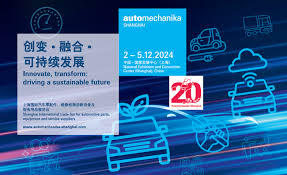
The space-age swish of a Star Wars pod racer could well be a recognised sound on our roads of the future as several West Midlands firms strive to create a solution that addresses the risk to pedestrians from the hushed engines of electric vehicles (EVs).
Home to the largest regional automotive cluster in the UK, the West Midlands’ academia and manufacturers are leading the development for EV noise emitting devises in advance of possible safety legislation being discussed in the Japanese market.
However, safety requirements alone are not the only concern for the resulting manufacturers. Dudley-based Westfield Sportscars has sought advice from it customers in developing an iconic noise that best represents its planned electric race car after conducting a poll at Autosport Show in Birmingham earlier this year.
“We’re in the early stages of the development, but we hope to base the electric race car’s noise on the pod racers seen in Star Wars Episode 1”, says Paul Faithful, technical director at Westfield.
He added: “There’s talk in racing circles about a beeper requirement for EVs when entering the pits. Whilst this may prove effective for safety reasons, we want something that’s a bit easier on the ears of the mechanics and spectators watching.
“The plan currently is to make the noise using a form of whistle effect, which uses the body shape to drive air through a noise-making device at speed. This will reduce the need for any type of bleeper at anything other than low speed, and will inherently make the noise related to give spectators of electric car racing a sense of the of the vehicle’s speed.”
The advent of a noise that’s iconic to a motoring brand also features high on the agenda for Cenex – the UK’s first Centre of Excellence for low carbon and fuel cell technologies – forming part of its £2.5 million Niche Vehicle Research and Development Programme (NVRDP), which is based at Coventry University and funded by regional development agency Advantage West Midlands.
Julia Chance, programme manager at Cenex, said: “EVs have the capacity to use directional sound rather than that of a traditional combustion engine, which invariably emits noise in all directions, including upwards into offices and living spaces.
“The opportunities are immense for the automotive industry to collaborate with the audio sector, with the possibilities in the future for ‘brand’ signature noises for electric cars and opportunities for new processes.
“Already in this area, Lotus has developed a first generation of technology that modifies existing sound-cancelling technology (developed to stop intrusive noises inside the car) to produce an audible sound outside the car, which changes at speed and use of the throttle. Cenex is supporting the testing of this technology and the project partners will be working with stakeholder groups to help refine the technology development.”
Also operating as part of the CENEX NVRDP, Coventry-based manufacturer Microcab is conducting trials at the University of Birmingham with its car powered by a hydrogen fuel cell. Managing director, John Jostins, said: “When conducting our tests on a university campus we’ve identified that there is a sound need for vehicles, particularly with the popularity of modern portable music players. We’re currently experimenting with a range of sounds on our vehicles to see what works best.
“We’ve previously trialled beepers to raise awareness of a vehicle’s presence, but these tend to irritate pedestrians. Whatever is agreed upon as an acceptable noise for EVs, it needs to be continuous for safety reasons as well as being consistent.”
Professor Paul Jennings of WMG at the University of Warwick has led research into vehicle sound appraisal systems with the region’s manufacturers and is beginning research specifically into EV noise.
He summarises three key factors for EV manufacturers to consider before settling on a sound that represents the next generation vehicles on the road. “A reduction in vehicle sound obviously brings huge benefits to our city centres as it is a major contributor to noise pollution”, he said. “But having some sound as a warning of an approaching vehicle is paramount in the urban landscape where accidents can become a reality, particularly in the presence of visually impaired pedestrians. Having some sound is likely to become a legislative requirement, but it should be based upon character not level.
“The final element is the importance of demonstrating consistency with the brand, as the sound will say a lot about the type of vehicle being driven. It’s recognised today that some people like the sound of their cars, and vehicle manufacturers will certainly want the sound to harmonise with their brand values.”
The automotive sector is one of the most heavily regulated industries in the world, so legislation governing the noise emissions of EVs is almost inevitable. However, whilst a degree of consistency over maximum and minimum safe and practical noise levels would only be sensible, it is hoped that there will be sufficient flexibility to allow manufacturers to develop their own solutions.
Whether legislation is introduced in the Japanese, American or European market first is unclear but, what is certain is that, the solutions these markets apply will be influenced by the innovative research and development going on in the West Midlands – a region which is home to 1,500 automotive companies.














More Stories
5 Conclusions One Can Make by Analyzing Car Accident Statistics
Why You Should Invest in Regular Car Washes to Protect Your Investment
Workers’ Compensation for Repetitive Stress Injuries